Dapper Dudes: 1930s Men’s Hairstyles and Fashion
The 1930s was an era of great social change, and this was reflected in men’s hairstyles of the time. As the decade marked the beginning of the Great Depression, people began to favor more practical, economical styles of dress. At the same time, emerging technologies, such as mass-produced clothing and the introduction of the automobile, also influenced the way men dressed.
From the clean-cut styles of the early 1930s to the slicked back and pompadour looks of the mid-1930s, the men of the 1930s had a variety of options when it came to expressing their style. The early 1930s were characterized by a clean-cut, conservative look.
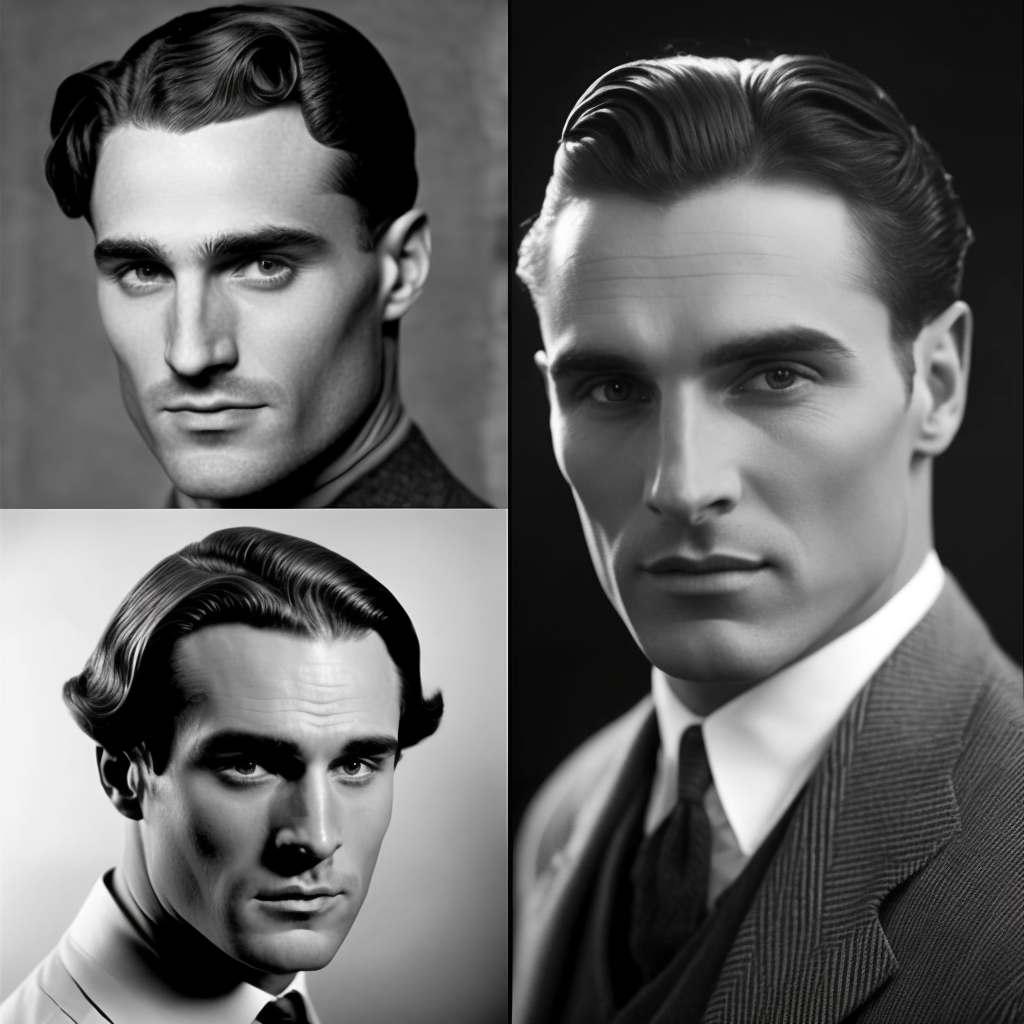
The most popular 1930s men’s hairstyle was the slicked-back look, which was achieved by using pomade or wax to slick the hair back and away from the face. This style was favored by men of all ages, though it was particularly popular among young men, as it had a youthful, modern look.
The combination of the Great Depression and the rise of technology also saw the emergence of a new “uniform” for men. At the time, men typically wore suits, dress shirts, and ties with a hat for formal occasions, and casual trousers and sweaters for everyday wear. This was a huge departure from the more extravagant, flashy styles of the 1920s, which had been popular prior to the economic downturn.
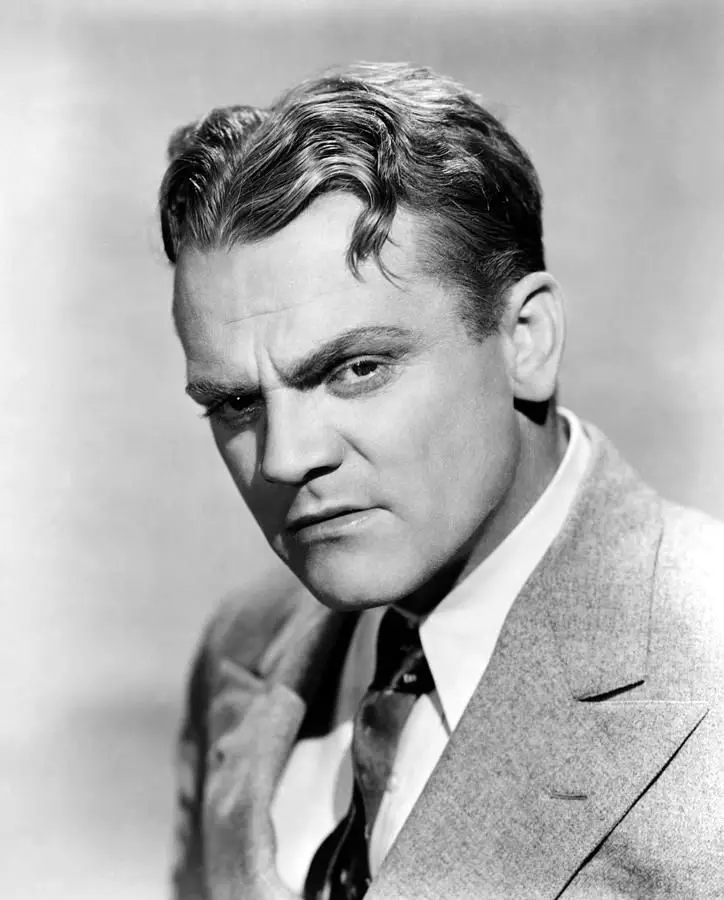
Men wore classic suits with narrow lapels and trousers that were creased and cuffed at the bottom. These suits were often paired with thin ties, pocket squares, and classic fedoras. Hair was kept short and neat with side parts and slicked-back looks being popular. This style was also seen in the popular movie stars of the era, such as Clark Gable and James Cagney.
By the 1930s, men’s hairstyles had become more daring and flashy. Suits were wider and more colorful, ties became broader, and hats were less conservative in style. Haircuts were also becoming more daring.

The emergence of new technologies also had an impact on the 1930s men’s hairstyles. The invention of the electric razor made it easier for men to maintain short, neat haircuts, and this became the preferred style of the time. Men’s hair was typically cut close to the scalp and kept neat and tidy with the use of pomade or wax.
As the decade progressed, a variety of different cuts became popular, including the “ducktail”, which was a style that featured the hair combed back at the sides and a longer length in the back.
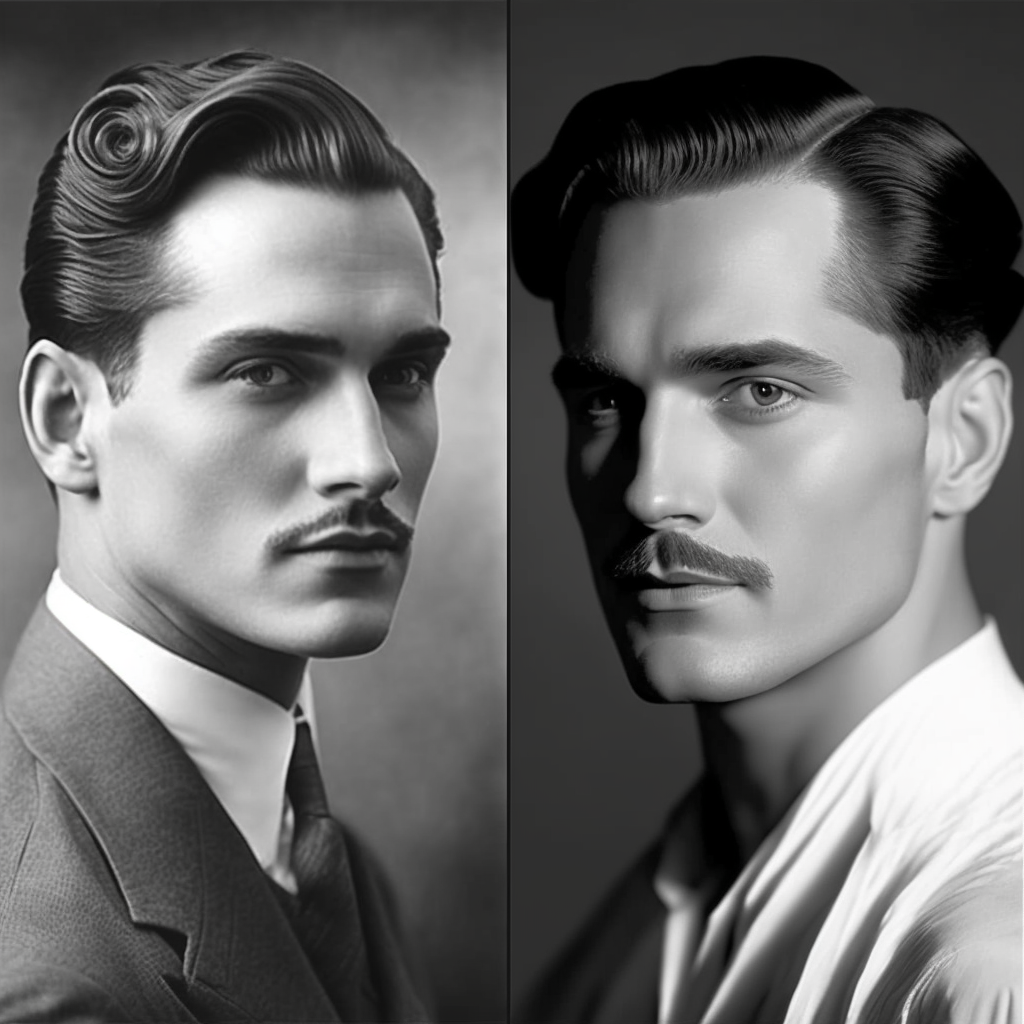
The 1930s was a time of great social change, and this was reflected in the way men dressed and groomed themselves. The emergence of new technologies, coupled with the economic downturn, saw a shift away from the more extravagant styles of the 1920s, towards a more practical and economical approach to dressing.
Men’s hair was typically kept short and neat, and the “uniform” of suits, dress shirts, and ties became the norm. The decade also saw the emergence of several new haircuts, such as the “ducktail”, which remains a popular style to this day.
1930s Men’s Fashion: A Vintage Style Guide
The 1930s was a captivating era that witnessed the rise of dapper and sophisticated men’s fashion and hairstyles. From the elegant double-breasted suits and fedora hats to the slicked-back pomade hairstyles, this period embodied a refined sense of masculinity that continues to inspire modern menswear. In this comprehensive guide, we’ll explore the defining style elements that characterized the Prohibition era and the Golden Age of Hollywood, delving into the influential role of Art Deco aesthetics and the impact of Hollywood celebrities on men’s fashion.
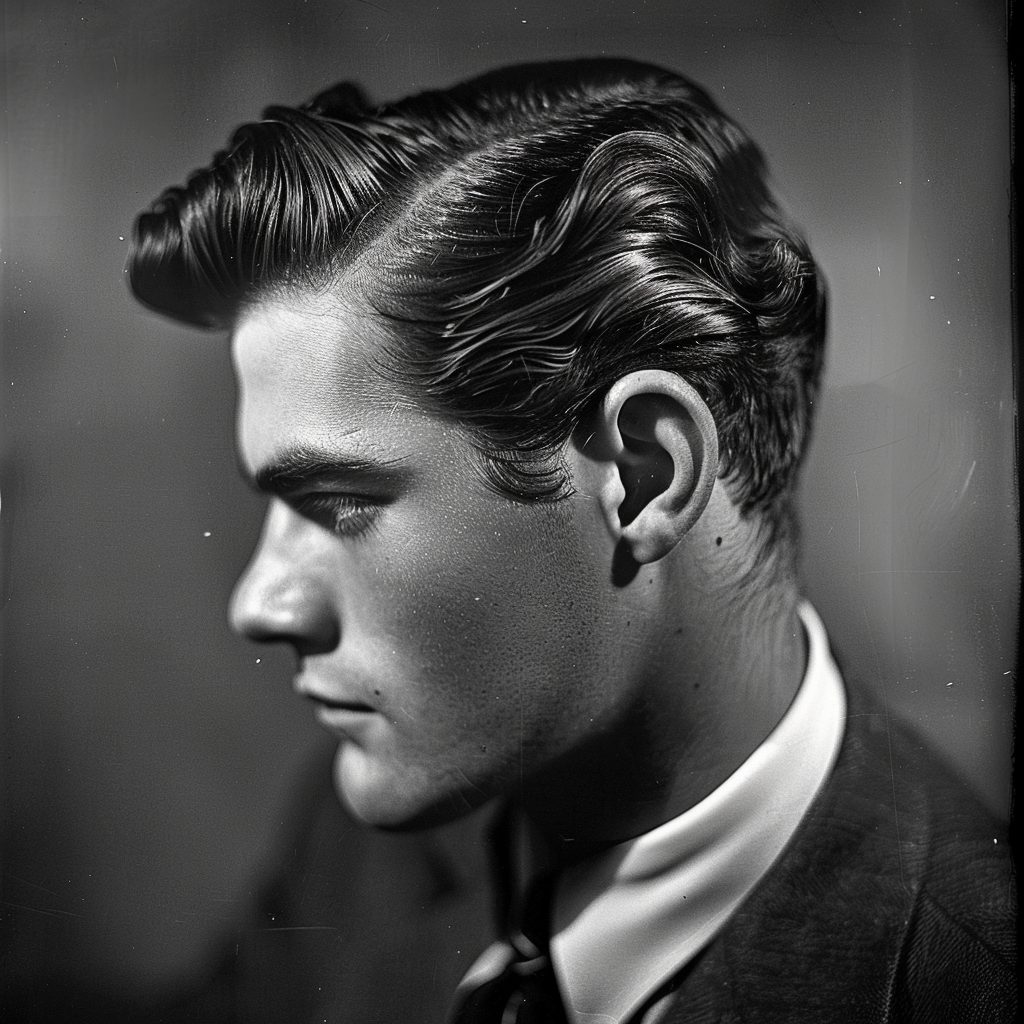
Throughout the decade, 1930s men’s fashion and hairstyles were defined by a blend of vintage menswear, Art Deco style, and the allure of the Prohibition era. Dapper gentlemen embraced a sartorial elegance, adorning themselves in meticulously tailored double-breasted suits, complemented by fedora hats and oxford shoes. The pomade hairstyles that were so popular at the time further accentuated the refined and debonair appearance of these 1930s men.
As the decade progressed, the influence of Hollywood glamour became increasingly apparent, with silver screen icons like Cary Grant and Fred Astaire setting the standard for masculine style. These vintage fashions not only captivated audiences but also inspired men across America to emulate the sophisticated and polished look of their favorite actors.
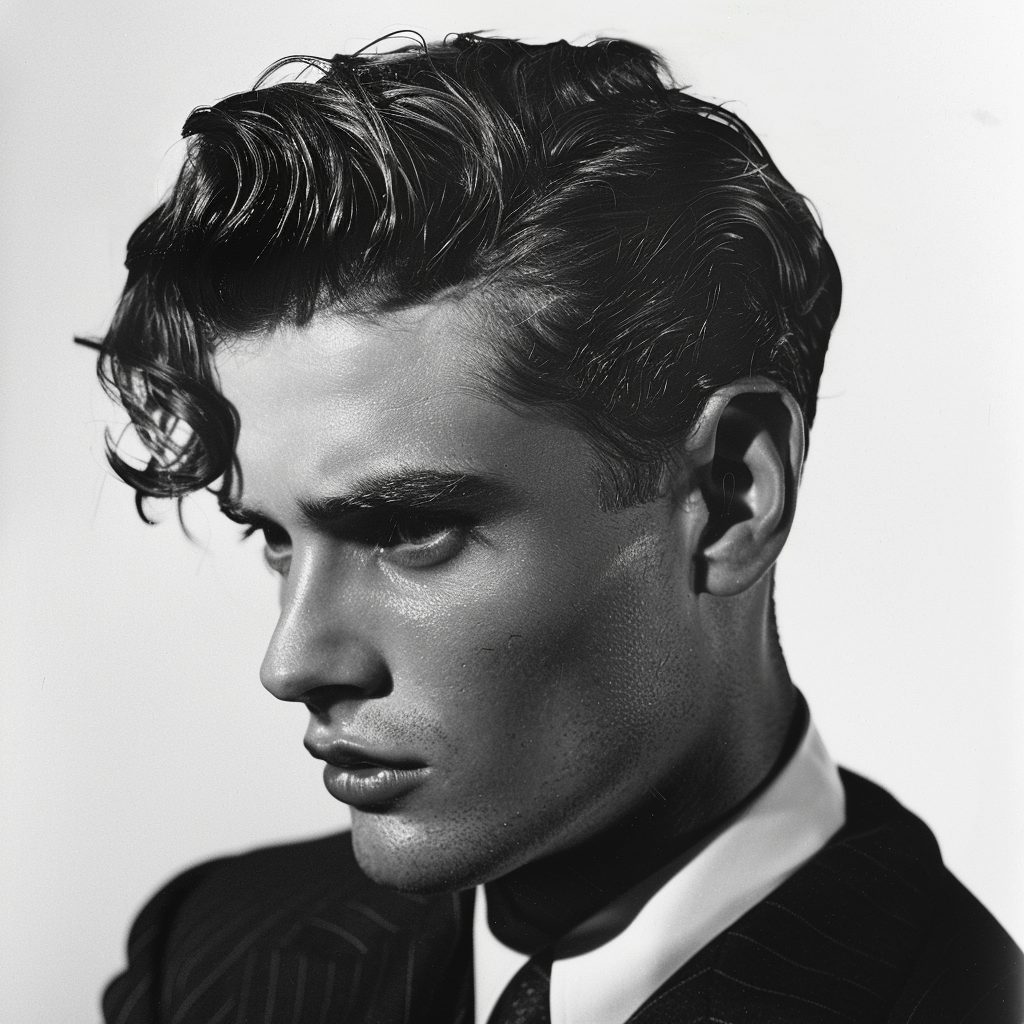
The Golden Era of Dapper Gentlemen
The 1930s was a time of glamour, elegance, and refined masculinity in men’s fashion. This “Golden Era” was shaped by the Prohibition era‘s call for sophistication and the growing influence of Hollywood celebrities. Wealthy and stylish gentlemen embraced a dapper aesthetic, with double-breasted suits, fedora hats, and perfectly coiffed pomade hairstyles becoming the epitome of masculine style.
Prohibition Era Glamour and Elegance
During the Prohibition era, the demand for sophistication and refinement in men’s fashion grew as a reaction to the illicit activities of the time. Stylish gentlemen sought to project an image of respectability and affluence, donning impeccably tailored double-breasted suits and complementing them with the iconic fedora hats that became a hallmark of the era.
Hollywood’s Influence on Men’s Fashion
The rise of Hollywood glamour had a significant impact on men’s fashion in the 1930s. Hollywood stars further popularized the refined and debonair looks that had become synonymous with the dapper gentlemen of the time. Men across America sought to emulate the sophisticated appearance of their favorite silver screen icons, embracing the slicked-back pomade hairstyles and impeccable tailoring that defined the era’s masculine style.
1930s Men’s Fashion and Trendy Hairstyles of the Decade
The fashion of the 1930s was defined by a few key elements that became staples of the well-dressed gentleman’s wardrobe. Double-breasted suits, with their clean lines and tailored silhouette, were a symbol of style and affluence. Fedora hats, with their distinctive crown and brim, added an air of sophistication and mystery to any outfit. And the timeless Oxford shoe, with its sleek design and durable construction, completed the polished look of the 1930s gentleman. These fashion icons not only defined the era but continue to influence modern menswear.
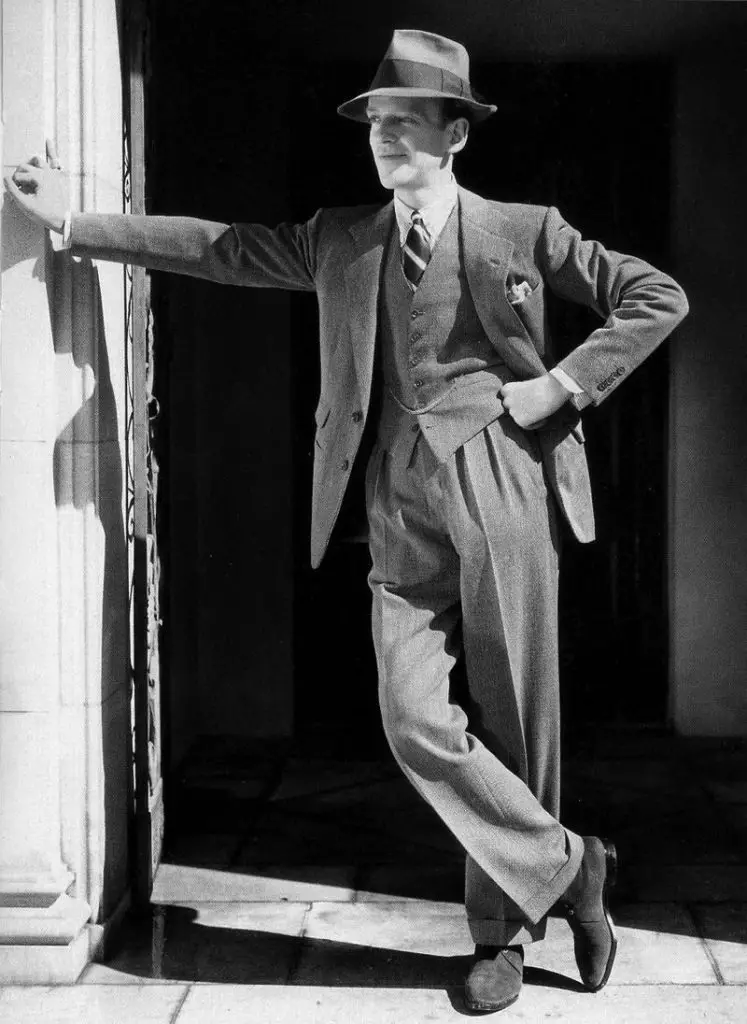
1930s Fashion for Men
Double-Breasted Suits: A Symbol of Style
The double-breasted suit, with its distinctive overlapping front panels, became a hallmark of 1930s men’s fashion. These impeccably tailored garments exuded a sense of refined elegance and affluence, reflecting the refined tastes of the era’s well-dressed gentlemen. The clean, structured lines of the double-breasted suit not only created a sleek, sophisticated silhouette but also conveyed an air of authority and confidence.
Fedora Hats: The Ultimate Accessory
No 1930s ensemble was complete without the iconic fedora hat. With its distinctive indented crown and wide, curled brim, the fedora lent an air of mystery and sophistication to any outfit. These hats were not only stylish but also practical, providing protection from the elements while adding a touch of debonair charm to the wearer. The fedora became a signature accessory for the dapper gentlemen of the 1930s, cementing its status as a timeless fashion icon.
Oxford Shoes: A Classic Touch
The Oxford shoe, with its sleek, lace-up design and durable construction, was an essential component of the 1930s gentleman’s wardrobe. These shoes, with their smooth leather uppers and subtle broguing, complemented the tailored silhouettes of double-breasted suits and added a touch of refinement to any outfit. The Oxford shoe’s versatility and timeless appeal have made it a enduring classic in men’s fashion, continuing to influence contemporary footwear trends.
The Art Deco Revival
The 1930s witnessed a resurgence of the captivating Art Deco aesthetic, which profoundly influenced the fashion choices of men during this era. Designers embraced the bold, geometric patterns and vibrant, saturated colors that defined the Art Deco style, seamlessly incorporating these elements into their collections. This artistic movement manifested itself in the sharp, angular silhouettes of 1930s men’s fashion and hairstyles, from the clean lines of double-breasted suits to the distinctive shapes of fedora hats.
Geometric Patterns and Bold Colors
The Art Deco style was characterized by its striking visual impact, with designers utilizing bold, geometric patterns and a vibrant, high-contrast color palette. These design elements were not limited to the world of interior design and architecture, but also found their way into the realm of 1930s men’s fashion and hairstyles. The incorporation of these geometric patterns and bold colors helped to define the sleek, sophisticated look that epitomized the well-dressed gentleman of the 1930s.
Hairstyles of the Era
The 1930s saw a focus on slicked-back, meticulously styled hairstyles for men. The use of pomade was essential to achieve the shiny, smoothed-back appearance that was so popular at the time. Side parts, where the hair was divided neatly to one side, were another hallmark hairstyle of the era. Some men also experimented with finger waves, creating soft, undulating patterns in their hair for a more textured and sophisticated finish.

Pomade and Slicked-Back Looks
The pomade hairstyles and slicked-back looks were a defining characteristic of 1930s men’s fashion and grooming. These carefully coiffed styles not only complemented the sharp, tailored fashions of the era but also helped to project an image of refined masculinity.
Side Parts and Finger Waves
In addition to the pomade-fueled slicked-back looks, the side parts and finger waves were also popular hairstyles during the 1930s. Side parts, where the hair was neatly divided to one side, added a touch of sophistication to any outfit. Some men even went a step further, experimenting with finger waves to create soft, undulating patterns in their hair for a more textured and refined finish.
Vintage Menswear Today
The enduring appeal of 1930s men’s fashion and hairstyles continues to influence modern menswear. Designers and style enthusiasts alike have embraced the timeless elegance and sophistication of this vintage era, incorporating elements such as double-breasted suits, fedora hats, and slicked-back pomade hairstyles into contemporary collections and personal wardrobes. The 1930s aesthetic, with its Art Deco-inspired aesthetics and Hollywood-inspired glamour, continues to captivate and inspire fashion-forward men who seek to emulate the dapper and debonair look of the bygone era.
This vintage influence can be seen in the resurgence of classic menswear silhouettes, the return of distinctive accessories like fedora hats, and the ongoing popularity of pomade-styled haircuts. Brands like Brooks Brothers, Banana Republic, and Ralph Lauren have all drawn inspiration from the 1930s, reinterpreting these timeless fashion elements for a modern audience. Meanwhile, style-conscious individuals continue to curate their wardrobes with vintage-inspired pieces, seeking to channel the suave and sophisticated vibe of the 1930s men’s fashion and hairstyles.
As the fashion industry and sartorially-inclined men continue to embrace the enduring charm of vintage menswear, the legacy of the 1930s fashion and hairstyles remains a steadfast source of inspiration. This vintage revival not only pays homage to the glamour and elegance of the past but also allows modern men to cultivate a timeless and refined personal style that resonates with the dapper gentlemen of the bygone era.
More reads:
1950s Hairstyles Still on Trend Today
The Slick Back Haircut Past and Present